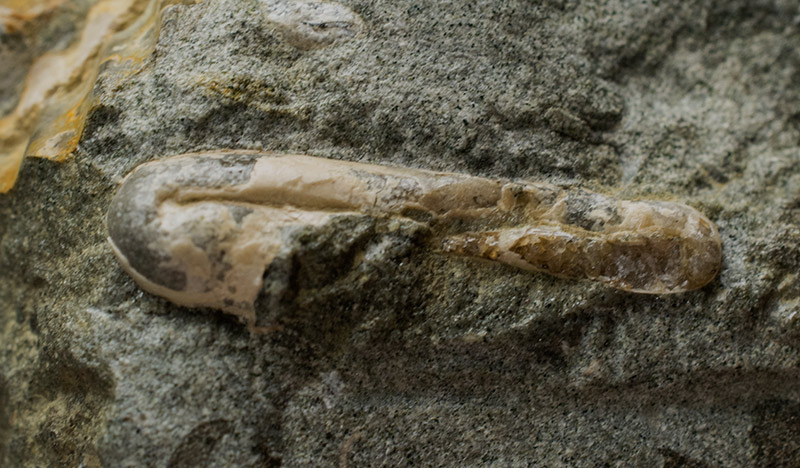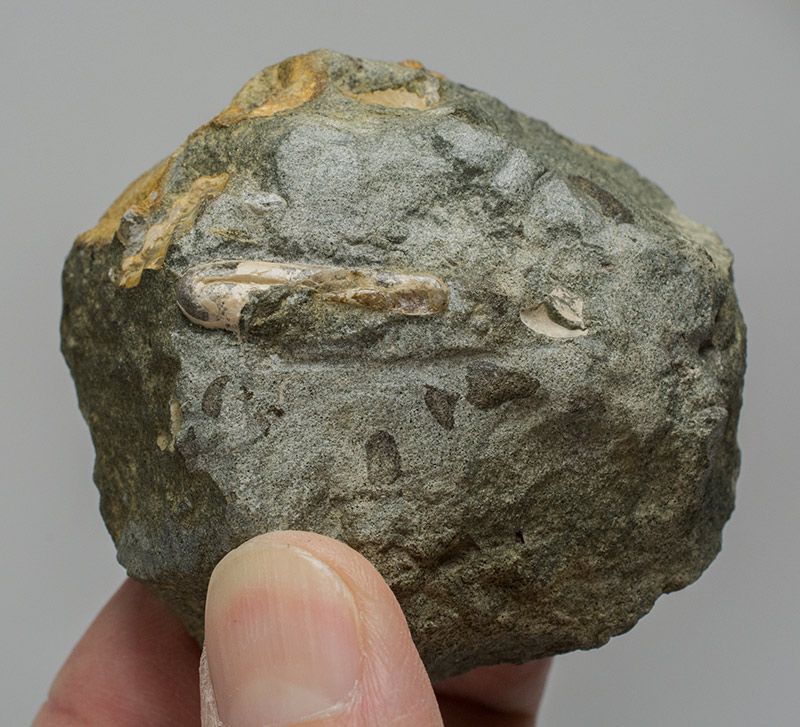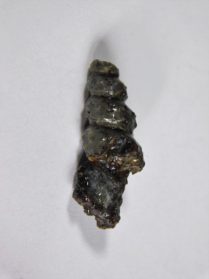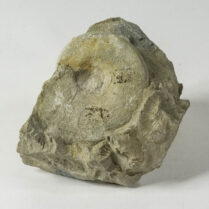Description
The shells of Ptychoceras consisted of three or four shafts squashed together and connected with tight, 180 degree bends.
The biology of the heteromorph ammonites is not clear, but one certainty is that their uncoiled shells would have made these forms very poor swimmers.
Open shells, particularly ones with spines and ribs, create a lot of drag; but more importantly, the orientation of the shell, with the body hanging below the buoyant part of the shell, would have created a serious impediment to efficient swimming.
It’s more likely these ammonites either drifted in the plankton, collecting small animals on long tentacles like modern jellyfish, or else they crawled along the sea floor feeding on sessile or slow-moving animals such as clams.
Lower Cretaceous (Aptian)
Samurskaya layer
Kurgips river, Apsheron, Krasnodar region, Russia
24mm heteromorph on 65mm slab
Ammonite, Heteromorph






